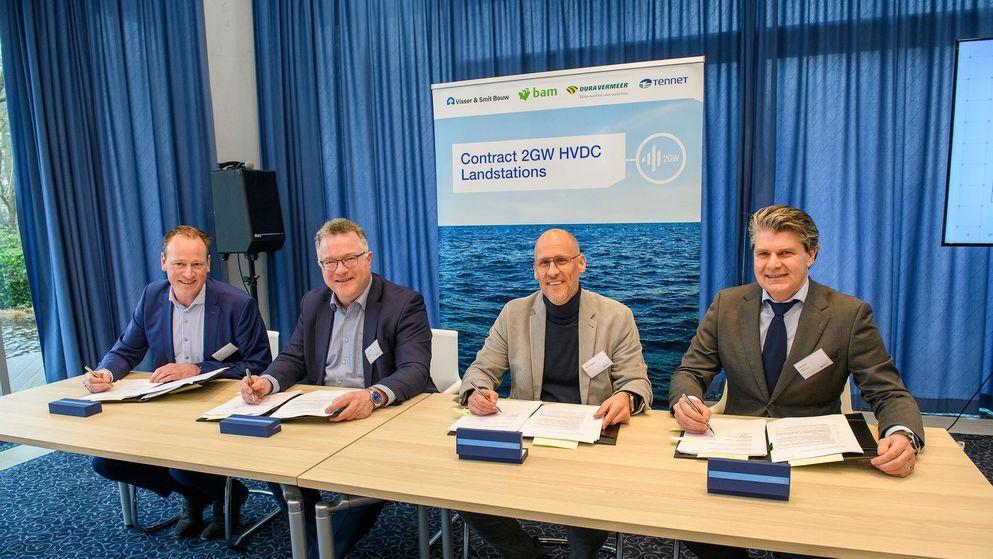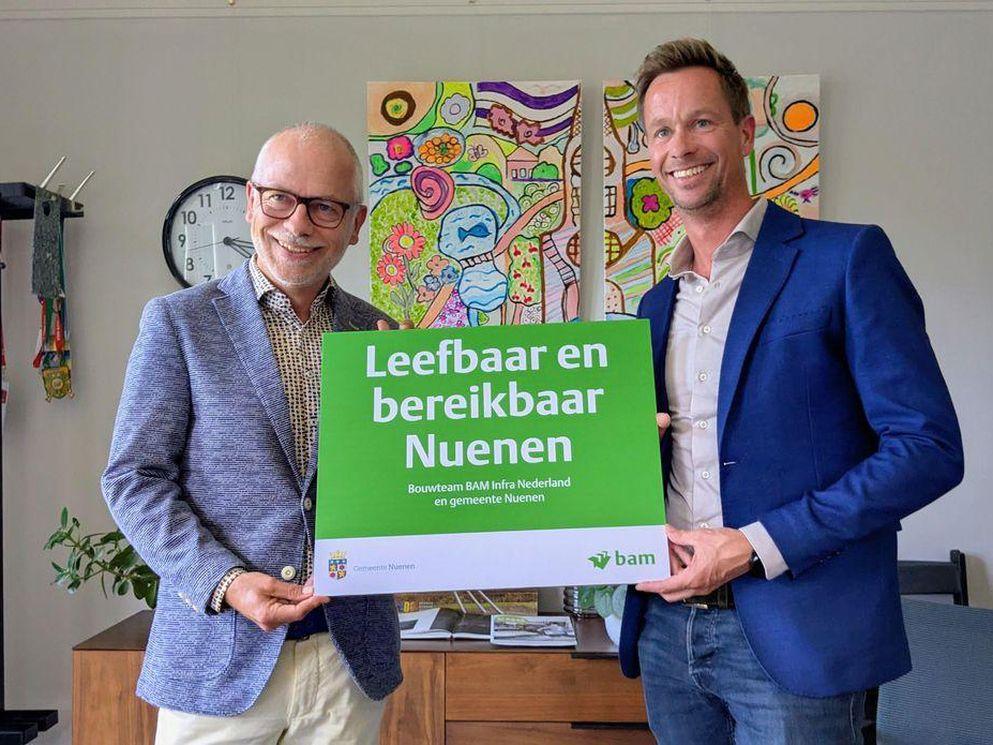TenneT selects three parties for civil engineering works land stations Dutch 2GW projects
(Press release TenneT:) Arnhem, the Netherlands, 22 February 2023 - TenneT has selected Dura Vermeer, BAM Infra Nederland and Visser & Smit Bouw in a framework agreement for civil engineering works for the construction of the 2GW land stations in the Netherlands.
New standard for grid connection of offshore wind farms
In a framework agreement, TenneT has selected Dura Vermeer, BAM Infra Nederland and Visser & Smit Bouw for the civil engineering works for the construction of the land-based stations for the 2GW (gigawatt) projects in the Netherlands. From 2024, TenneT will realise the connection of offshore wind farms according to a new 2GW standard. With this new standard, the power generated by offshore wind farms will be brought ashore via a High Voltage Direct Current (HVDC) connection. Land stations are the link between the offshore wind farms and the high-voltage grid. At the land station, the direct current is converted to alternating current and the voltage is transformed from 525kV to 380kV, making it suitable for the Dutch high voltage grid. Dura Vermeer, BAM Infra Nederland and Visser & Smit Bouw will realise the buildings and building-related installations for these land stations. Until 2030, this involves the realisation of at least eight land-based stations. The framework agreement can be extended for new 2GW projects are announced within the term of the contract.

Source: TenneT.
Quality, safety and sustainability
In the civil engineering works tender, the parties were selected on quality, safety and sustainability. Marco Kuijpers, Director Large Projects Offshore TenneT: ‘On the quality aspect, it's about proven experience and expertise. On safety and sustainability, the parties that have made progressive proposals to work as safely and sustainably as possible have been selected. For example, the roofs of buildings are built on the ground and then installed as a whole, reducing the need to work at height. To fulfil the ambition of 'TenneT's most sustainable land station', the parties were selected for their sustainability expertise. Thus, already during the design phase, the biggest polluting resources such as steel and concrete can be minimised and replaced by a sustainable alternative. These include wood and recycled concrete. By looking at the entire life cycle of the building, the least amount of pollution is controlled and low-emission vehicles and equipment are used as much as possible during construction. The limited outdoor space is also designed to maximise biodiversity while maintaining a safe working environment.’
Start of realisation
The basic design of the land stations has already been made. The selected parties are now directly involved in making the detailed design to ensure that the right solutions are chosen. ‘By working jointly on the designs, we can make choices at a much earlier stage. This contributes to the standardisation of the concept and ensures that we will face fewer surprises later in the process’, said Kuijpers. Work on the land stations will start in 2024. The first delivery of the civil engineering work for the land stations is expected in 2026.
About the 2GW Program
At present, TenneT's connection capacity is around 7.2GW in the German North Sea and around 2.8GW in the Dutch North Sea. TenneT's innovative 2GW program plays a crucial role in managing the energy transition from offshore and will help Europe become the world's first climate-neutral continent. This new standard combines our extensive expertise in offshore grid connections with a unique transnational approach. With its strong focus on harmonisation and standardisation, it provides a blueprint for future offshore grid connection systems and enables faster deployment. At the same time, the larger capacity of two gigawatts per system reduces the number of grid connections required. The 2GW program sets a new pace for the European energy transition. It will provide Europe and its inhabitants with more green energy in a safe and cost-effective way - with the lowest possible environmental impact.
Click here for the original press release.



